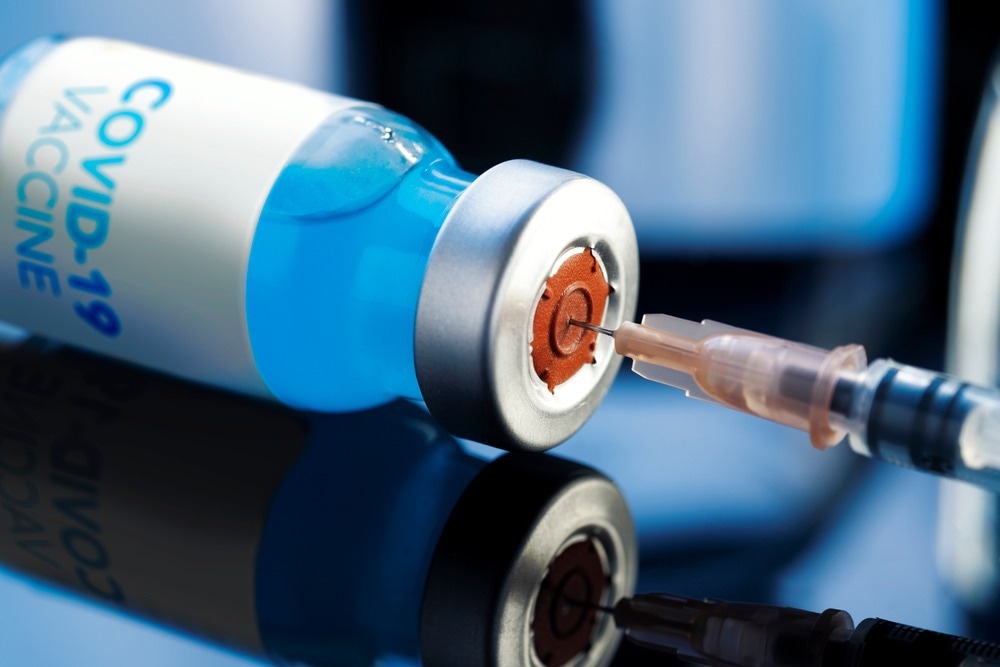Researchers report the development of robust candidate single immunization PNP hydrogel COVID vaccines
In a recent study posted to the bioRxiv* preprint server, researchers developed a one-dose subunit vaccine for the induction of durable, potent, and broad immunity against severe acute respiratory syndrome coronavirus 2 (SARS-CoV-2).

Background
Most vaccines require multiple doses to elicit robust and durable anti-SARS-CoV-2 humoral immunity. Multiple dose requirements increase the complexity and cost of mass-scale vaccination programs and reduce the overall rate of vaccination and compliance. In light of the continual and rapid emergence of novel SARS-CoV-2 VOCs (variants of concern) with high immune evasiveness, alternate vaccines for durable and robust immune protection need to be developed.
The authors of the present study previously reported that injectable PNP (polymer-nanoparticle) hydrogels can enhance immune responses when utilized as carriers for vaccine delivery by co-delivering and sustaining adjuvants and antigens. The hydrogels comprise hydrous solutions of modified HPMC-C12 (hydroxypropylmethylcellulose) and PEG-b-PLA [poly(ethylene glycol)-b-poly(lactic acid)]-comprising polymeric NPs.
About the study
In the present study, researchers developed single-dose PNP hydrogel subunit vaccines for immune protection against coronavirus disease 2019 (COVID-19).
Injectable PNP hydrogels were leveraged as a depot technology for sustained SARS-CoV-2 receptor-binding domain (RBD) NP antigen delivery and 3M052 (TLR7/8 agonist) or CpG (TLR9 agonist) as potent adjuvants. The hydrogel’s mechanical and viscoelastic properties were tuned to sustain SARS-CoV-2 antigen delivery dynamics and formulate an effective single-dose COVID-19 vaccine.
The viscoelastic properties of PNP-1-5, PNP-1-10, and PNP-2-10 were characterized based on various rheological methods. The team performed frequency-dependent oscillatory shear analysis, flow sweep analysis, stress-controlled flow sweep analysis, step-shear analysis, and cargo release analysis. Further, six C57BL/6 mice were subcutaneously administered 100 μL of PNP-1-5, PNP-1-10, and PNP-2-10 hydrogel vaccines, and also 200 μL of PNP-1-5 hydrogel (PNP-1-5 2X volume), comprising adjuvants such as 3M052 (1 μg), Pam3CSK4 (20 μg), cGAMP (20 μg) and CpG (20 μg) were administered to the animals.
The best-performing one-dose SARS-CoV-2 RBD NP PNP hydrogel vaccine was compared with regular prime-boost soluble RBD NP vaccines in saline, which were administered three weeks apart, following which, the murine serum samples were obtained over 10 weeks. The anti-RBD immunoglobulin G (IgG) titers were measured by enzyme-linked immunosorbent assays (ELISA). Further, the durability of immune protection was assessed by obtaining serum samples six months after the initial vaccination, and half-lives of binding antibody titers were estimated.
Drug Discovery eBook

The IgG2c and IgG1 isotypes were assessed as the isotypes are strong indicators of Th1 (helper T cell 1)- and Th2-skewed immunological protection, respectively. Subsequently, the anti-SARS-CoV-2 spike (S) protein IgG titers were measured at week 6 to confirm the antibodies induced by RBD NP vaccines cross-reacted with the native SARS-CoV-2 S RBD. Further, antibody titers against Delta VOC and Omicron VOC were assessed to evaluate the breadth of immune protection generated by the hydrogel vaccines.
SARS-CoV-2 S-pseudotyped lentivirus assays were used to assess the inhibition of SARS-CoV-2 entry into TMPRSS2 (transmembrane protease serine 2)- and ACE2 (angiotensin-converting enzyme 2)-expressing HeLa (Henrietta Lacks) cells. Neutralization assays were performed, and the vaccines’ SARS-CoV-2 neutralization potency and breadth were compared to those of SARS-CoV-2 wild-type (WT) strain-infected human COVID-19 patients’ convalescent sera.
Results
Compared to the soluble prime-boost regimen vaccines, the one-dose PNP hydrogel vaccines induced greater, more durable, potent, and broader humoral responses, with consistent and greater SARS-CoV-2 neutralization. The hydrogel vaccines were self-healing and shear-thinning and, therefore, could be administered as simple injections and formed robust subcutaneous depots after injection. The hydrogels could finely tune cargo diffusion, and the depots provided sustainable co-delivery of vaccine cargoes over 2.0 weeks to 4.0 weeks.
The hydrogel’s network density was altered by varying the weight percent ratio of HPMCC12 to PEG-b-PLA NP. Multivalent non-covalent interactions between the NPs and polymer led to the creation of physically crosslinked hydrogels for co-delivering the vaccine constituents. High anti-SARS-CoV-2 IgG titers were observed over 10 weeks for all hydrogel formulations and all animals seroconverted, irrespective of the constitutive adjuvant. However, PNP-1-5 produced the highest titers, and mice vaccinated with 3M052, and CpG adjuvants induced the highest anti-RBD titers after six weeks.
The sustained release of RBD NP with CpG or 3M052 and in PNP-1-5 hydrogels could sustain high antibody titers over 10 weeks, thereby mitigating booster dose requirements. Elevated IgG2c titers for CpG- and 3M052-adjuvanted hydrogels showed balanced Th1/Th2 immune responses, and the greatest and most consistent titers against WT S and Delta S. The 3M052-adjuvanted hydrogels showed the greatest anti-Omicron S titers. All groups showed greater neutralization titers than SARS-CoV-2 WT-infected human convalescent sera.
Conclusion
Overall, the study findings showed that single-dose PNP hydrogel vaccines could elicit broad, potent, durable, and cross-reactive SARS-CoV-2 neutralizing responses and, therefore, could be a promising vaccine candidate to improve global preparedness and reduce the COVID-19 burden.
*Important notice
bioRxiv publishes preliminary scientific reports that are not peer-reviewed and, therefore, should not be regarded as conclusive, guide clinical practice/health-related behavior, or treated as established information.
- Ou, B. et al. (2022) "Broad and Durable Humoral Responses Following Single Hydrogel Immunization of SARS-CoV-2 Subunit Vaccine". bioRxiv. doi: 10.1101/2022.12.12.520166. https://www.biorxiv.org/content/10.1101/2022.12.12.520166v1
Posted in: Medical Science News | Medical Research News | Disease/Infection News
Tags: ACE2, Agonist, Angiotensin, Angiotensin-Converting Enzyme 2, Antibodies, Antibody, Antigen, Cell, Coronavirus, Coronavirus Disease COVID-19, covid-19, CpG, ELISA, Enzyme, Frequency, Hydrogel, immunity, Immunization, Immunoglobulin, Lentivirus, Nanoparticle, Omicron, Protein, Receptor, Respiratory, SARS, SARS-CoV-2, Serine, Severe Acute Respiratory, Severe Acute Respiratory Syndrome, Stress, Syndrome, Vaccine

Written by
Pooja Toshniwal Paharia
Dr. based clinical-radiological diagnosis and management of oral lesions and conditions and associated maxillofacial disorders.
Source: Read Full Article
